Painting, decorating and home improvement tips blog
How to fix squeaky floorboards
Posted by Adrian
September 23rd, 2019
How to fix squeaky and creaking floorboards
You know how it is, you creep home late at night and head up to bed trying not to wake the family, then squeak the floorboards make a noise like the floor is falling through and wakes the family, not a good scenario but one fairly common I would guess.
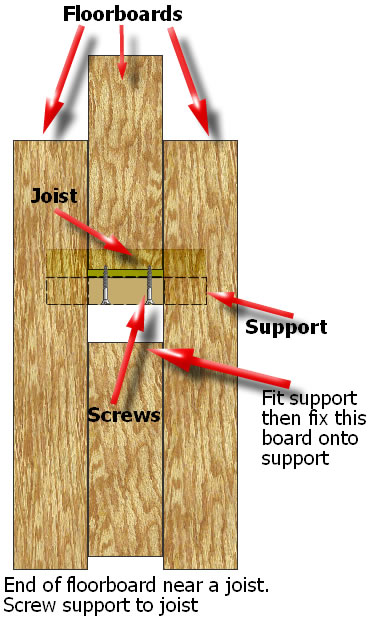
If you suffer from squeaky and creaking floorboards it can not only wake the family as I jokingly mentioned above it can just be annoying. Well thankfully it isn’t too much of a problem to fix them for any handyman or DIY enthusiast.
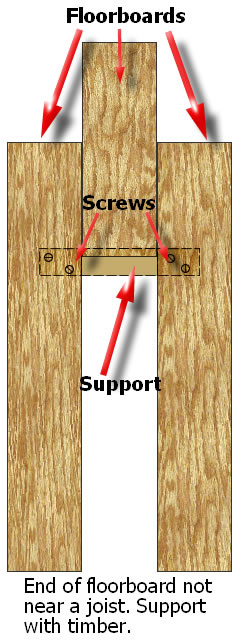
What causes squeaky floorboards
Squeaky floorboards are caused mainly by badly fitting boards. If the boards are taken up to run electrical cables or pipework and are not put back properly, or the boards nailed back using the old nails in the old nail holes which means the nails don’t have a tight fit on the board and allow for them to move and squeak. Sometimes the end of the boards are not sitting on a joist and can move rubbing against the floorboards next to it.
Another reason for squeaky floorboards is simply that the boards have dried out and the nails are no longer holding the board down tight enough or the boards have moved and are rubbing together, whatever the reason you should be able to fix the problem.
How to fix squeaky floorboards
The first thing to do is to remove the floor covering, or part of it if you can’t fully clear the room. Once the floor covering has been removed you need to tread the boards, walk around and identify the squeaks and creaks and mark the boards where the noise is with a pencil. Do this over the entire floor.
Now go back and look at each mark you have made and identify what the problem is, for just boards that are rubbing together, you can either remove a board and plane a little off the edge, or try adding some talcum powder or chalk dust between the two rubbing boards to help movement between the two boards.
If the boards seem to be moving around the nails at the end of the boards, you need to screw these down. Don’t just put a screw in though as you may go through an electrical cable or a pipe, you may have to lift the board to see what is underneath first. Remove the nails and drill pilot holes next too the old nail holes so not to split the wood and then put a screw in making sure it pulls the board down tight.
If the board is split at the end, you may have to replace that board, or you may be able to lift it and turn it round so the other end is under the skirting board.
If the end of the board isn’t supported on a joist you will have to lift the board and put in a support. This can be done by lifting the unsupported board and fitting a length of 2×1 (50mm x 25mm) under the boards, ideally fixing it to a joist with screws. If a joist isn’t near, screw through the floorboards under either side of the unsupported one fixing the support to the underside of the boards, then re-fix the previously unsupported board and screw this board into the timber support you have fitted.
Do I need a new floor
Depending on how the floorboards have been lifted and cut will depend on if you need to replace boards or not, as mentioned above you may be able to lift a board and turn it around so the damaged end goes under the skirting, or even under furniture that doesn’t move. On the whole squeaky and creaking floorboards can be rectified.
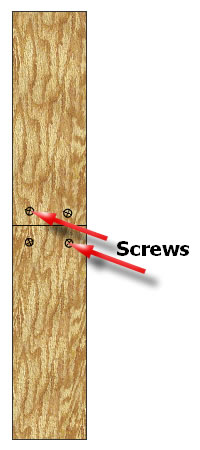
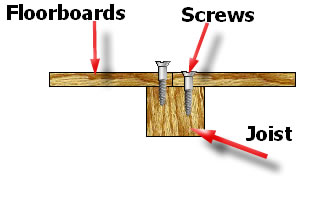
How to lift floorboards
To lift floorboards you can use a club hammer and a wide bladed chisel such as a cold chisel or by using a crowbar. Prise the board up from one side then the other, be careful not to split the board, once you have the board slightly lifted up lay a piece of timber underneath to hold the end up and continue working along the board and moving the timber support as you go. If the floorboards are tongue and groove, you will need to cut the tongue off first in order not to damage the grove on the board next to it.
Safety First
Always remember to check under the floorboards for pipework and electrical cables before nailing or screwing down the floorboards, this will avoid driving a nail or screw through them. It is always a good idea to mark on the floorboards where the cables and pipes run under the floor, you can do this by using a pencil or better still a permanent marker pen. By marking the floor you will know where the cables and pipes run if you remove the floor covering or wish to run new pipework or cables in the future.
Tags: Cables, Chisel, Club Hammer, Creaking, DIY, Electrical, Floorboards, Flooring, Handyman, Nails, Pipes, Pipework, Plumbing, Squeaking, Woodwork
Posted in Home Improvements | No Comments »
How to sand a floor
Posted by Adrian
November 23rd, 2013
How to sand a floor
You may want to have an alternative floor covering to carpet, but don’t want the expense of a hardwood or laminate floor. Well, if you have wooden floorboards you can sand them down and either paint them a colour or use a clear floor varnish to show off the beautiful wood, or stain them.
To sand the floor well you will need to hire a floor and an edging sander. Hiring these is relatively inexpensive at around £50 for the two sanders for a day, and you typically get 24 hours hire which should be enough time for an average sized room.
Before you start sanding
As you sand the floor you will make a lot of dust, so remove as much as you can from a room, cover wall and ceiling lights (as long as they are not in use) with black bags, put masking tape over wardrobe doors and cupboards to prevent dust getting in, you can also seal around any doors to try and contain the dust in the one room.
Safety first
You should wear a suitable dust mask, goggles and ear defenders whilst sanding. These can be bought from the hire shop when you pick up the sanders.
Preparation for sanding the floor
Before you start sanding you should fix any loose floorboards, replace any damaged or rotten boards, and nail punch raised nails as they can catch the sandpaper and rip it, and maybe even cause damage to the sander which could result in paying a charge for repair at the hire centre.
Start sanding
To start sanding decide on the coarse of sandpaper to use, you should of got three types when you hired the sander, a coarse, medium and fine. Depending on the condition of the floor will depend on what sandpaper to use, if the floor is in good condition and has not been previously painted or stained you can use the medium, otherwise start with the coarse.
You should keep the sander moving at all times whilst it is switched on to prevent making dips and low spots.
Sand diagonally across the boards, this will help level them off and remove a good amount of the surface to reveal the wood lower down. Once you have completed one diagonal sanding, go the other way, and them sand in the direction of the boards.
Once you are happy with the boards you can change to the medium grit, working in the direction of the boards go up and down overlapping each strip, once you have done this a couple of times, repeat the process with the fine sandpaper until the floor is smooth.
Finishing of the edges
To finish off the edges, use the edging sander, again use the coarse, medium and fine sandpaper. A word of warning, be careful around heating pipes as the sander could damage or even cut the copper pipe. You can use a scraper or chisel to get right into the corners and around pipework.
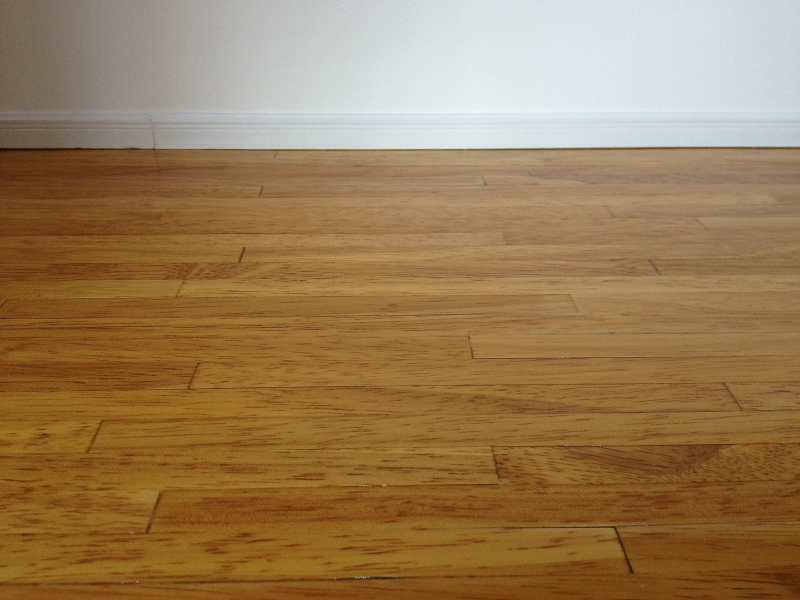
Staining, painting or varnishing a floor
Once you have sanded the floor and you are happy with it, it is time to clean up all the dust, vacuum the floor in both directions, and around and under the skirting boards, to remove any fine dust left on the floor, use a soft cloth and white spirit to wipe over the boards, this has the added benefit of removing and grease that may be left on the boards.
At this stage you need to be aware that the floor is vulnerable to stains so be careful walking across it and don’t spill your tea or coffee over it as you stand back and admire your hard work.
Painting the floor
If you are varnishing, painting or staining the floor the principle is the same, use a roller to apply the paint, I prefer to use a small roller but you may find it easier with a 9 inch roller to cover the area quicker. You will also need a brush to paint around the edges of the skirting boards.
Make sure the paint you are applying is a good quality floor paint, start with painting around the edge and then rollering up to it, apply one coat and leave to dry. If it is a quick drying paint / varnish you can apply more coats the same day otherwise leave overnight to dry.
Lightly rub the floor down between each coat and remove the dust before apply a second coat.
For high foot traffic areas apply three good coats to the floor. Once you have applied all the coats leave to fully dry before putting back furniture etc into the room. You may consider adding felt pads to the bottom of furniture such as dining table and chairs to help protect the floor.
Tags: Edging Sander, Floor, Floor Paint, Floor Sanding, Floor Stain, Floorboards, Flooring, Painting, Sanding, Sandpaper, Varnish
Posted in Decorating Tips | No Comments »
